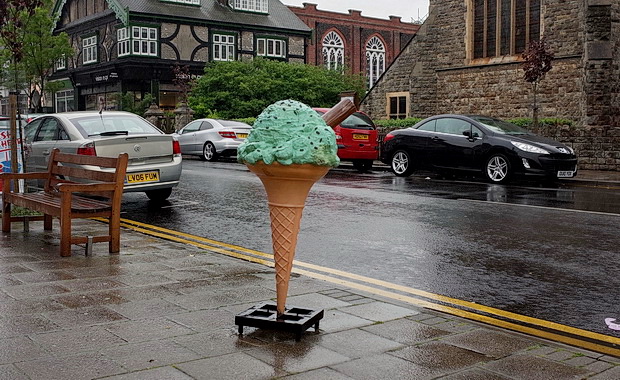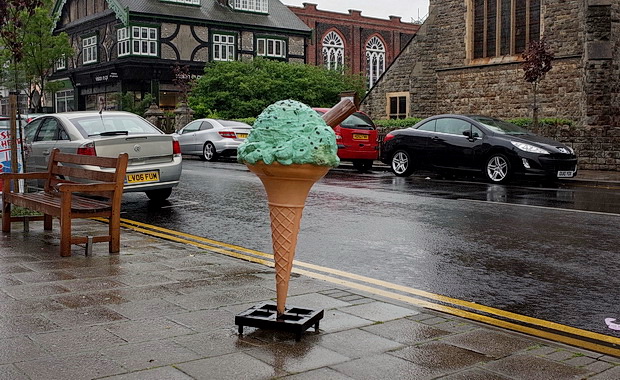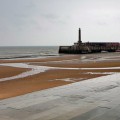
Before Dulwich Hamlet’s crucial play off final at Margate, I thought it would be a great idea to get off the train a stop earlier at Westgate-on-Sea and then walk the 3 miles or so into town.
This was to prove a Bad Idea, because as soon as I got off the train the rain got heavier and an almighty wind blasted me for every inch of the journey. But first, let’s take a look around Westgate-on-Sea:
A Grade II listed building in the heart of the Westgate on Sea Town Centre Conservation Area, St Saviour’s Church was consecrated on 23rd July 1884.
The Gothic styled church is constructed from Kentish ragstone with door and window arches of Bath stone, and was designed by Charles Beazley as an integral part of the exclusive development known as the Westgate on Sea Estate.
Apparently hosting a “fine organ and good stained glass including a five lancet east window by Charles Kempe and six others from his studio,” the church has a ring of six bells, five of which are older than the church itself.
The splendid Grade II listed Carlton Cinema was originally built and opened in March 1910 as the Town Hall, but was never used as such.
With its flamboyant Swiss-Gothic style architecture, its flat maplewood floor was used for roller skating before the building was converted into a cinema in 1912.
Changing its name from the Town Hall Cinema to the Carlton Cinema twenty years later, it now houses three screens and is owned by the Picturedrome Electric Theatre Company.
Video from 2009 showing the inner workings of the cinema.
Mr Butcher.
Here’s where you need to go for the best quality fat balls. And looking for mealworms? Hey, this place has ‘probably’ got the cheapest ones in Thanet!
Missing rabbit. It’s been AWOL since February 18th.
Now with a population of 6,600, Westgate was developed as a seaside resort from the late 1860s, primarily targeting wealthy metropolitan families.
In 1884, ownership of most of the resort passed to Coutts Bank, after the previous developers had gone bankrupt.
The town’s economy is mainly based around tourism, and there’s no shortage of hotels and guest houses near the seafront to accommodate the influx of visitors during the summer.
Some of the shops on the main drag retain a delightful corrugated iron canopy.
Leaving the town, I embarked on my foolhardy walk west to Margate.
The wind was ferocious and the rain never ceased during the walk, although the photos don’t really capture how miserable it was. It was so cold I wished I’d brought along gloves. In the middle of May!
Beach huts locked up.
Deserted beach.
St Mildred’s Bay was devoid of human life and its seafront buildings closed and shuttered .
The Beach Cafe didn’t look like it was going to open any time soon.
No ice creams on sale today.
The seafront chalets.
Rusted railing.
Outfall pipe.
Beach huts.
Looking back towards Westgate.
I saw one other person on the walk, walking a dog that seemed very reluctant to be out in the rain.
No takers for the Quick Fix bar.
A last look back before I headed off into Margate looking for a cafe where I could dry off and grab a much needed cuppa.
More Margate photo features can be seen here:
Over fifty Margate photos, including beach views, Dreamland, Turner Gallery, Old Town and more
Margate in the snow 2012
Occupy Thanet protest 2012
Margate Dreamland amusement park
Margate town photos
Margate town photos 2
Margate railway station
A return to the magnificent Lifeboat Inn, Market Street, Margate
A pleasant afternoon’s drinking in the Lifeboat Inn, Margate, Kent
Coffee and cake at the Greedy Cow Cafe, Margate


